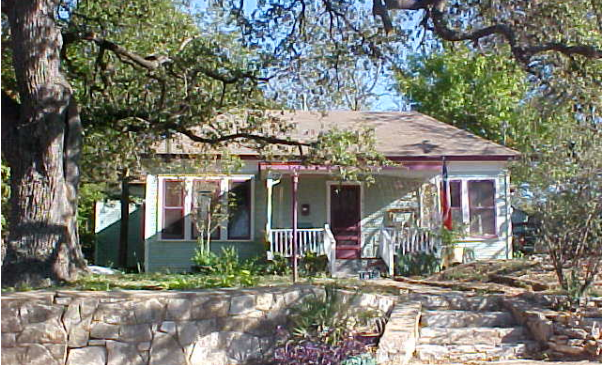BoA delays compromise variance in Travis Heights
Monday, August 17, 2015 by
Elizabeth Pagano Neighborhood support for a plan to preserve a historic home alongside new development wasn’t quite enough to sway the Board of Adjustment on a Travis Heights case at its last meeting.
Though some board members seemed inclined to support the requested variances and others seemed concerned about the requests, most eventually agreed on a postponement to get a better look at the street frontage. The board voted 7-1 to postpone the case, with Board Member Michael Benaglio voting in opposition “just because.”
David West, who owns the property in question, explained that the original intent was to demolish the existing structures at 1813 Brackenridge St. and build a 3,900-square-foot duplex. The lot is a through lot, with frontage on Brackenridge Street and Drake Avenue, and the plan would have one duplex entering from each street.
West explained that there were originally two buildings on the property and the city had had no objection to the demolition of the building closest to Drake Avenue. The city and South River City Citizens neighborhood association had urged preservation of the other building, however. As a result, West agreed to pursue restoration and renovation of the home.
“It’s an early 1900s structure that is extremely termite-damaged,” said West. “Structural issues, leaking roof – you name it, we have it. We have spent a lot of time and effort analyzing what it would take to restore this house, and I believe that we can absolutely do so.”
In turn, the SRCC has agreed to support a variance that will allow him to construct a second home where the Drake Avenue home once stood.
West was seeking a variance to increase the size of the new building from the allowed 850 square feet to 1,850 square feet and decrease the rear through-lot setback from 25 feet to 10 feet. He explained that the 25-foot setback pushed the structure into the critical root zone of a heritage tree and too close to the historic home.
The changes will allow him to construct a second home on the lot while preserving the existing 1,322-square-foot home.
Both the SRCC and the city’s Historic Preservation Office support the plan.
Angela Reed, who is a member of the SRCC’s ad hoc historic resources committee, spoke in favor of the variances. She told board members that the proposal was “absolutely in line with the character of the neighborhood” in terms of setback and height. She noted that the SRCC’s planning and zoning committee backs both variances, adding, “And that is a tough committee.”
“The fact that (West) is keeping that Brackenridge house is very important to the neighborhood. It’s a tough road for us to keep those modest structures in Travis Heights,” said Reed. “We’re really grateful that they have gone through all of these steps to try and work with us. We think it’s exemplary, really.”
Board Member William Burkhardt raised bigger questions, asking Reed whether the SRCC was comfortable with the precedent that the variances would set along Drake Street. Reed affirmed that it was, much to his disbelief.
“This is hugely precedent-setting, kind of, for the Land Development Code. I’m really surprised that you would advocate as strongly for what I’m seeing,” said Burkhardt. “I appreciate the goodwill … but this strikes me as really, really kind of … far out there.”
He added, “The entire Land Development Code is to prevent this from happening.”
Specifically, Burkhardt worried that the variances “fly in the face” of restrictions on through lots, secondary units and two-family constructions. He also worried that the frontage on Drake was “pretty brutal,” in that it took up 61 feet.
Reed disagreed, saying that it wasn’t that out of character with that area of Travis Heights. “We really are trying to balance growth with density in an appropriate way,” she said.
Board Member Michael Von Ohlen disagreed with the thought that granting the variances would be “precedent-setting.” He noted that the board granted variances based on individual hardships.
“The way we are established here, each case has to be taken based upon its own merits. No two cases are exactly alike,” said Von Ohlen. “The only way that this becomes a hardship is if we just start rubber-stamping these things. … We have such a breadth of knowledge, I don’t think anyone is going to be getting any rubber-stamping coming out of this Board of Adjustment.”
Photo courtesy of the city of Austin.
You're a community leader
And we’re honored you look to us for serious, in-depth news. You know a strong community needs local and dedicated watchdog reporting. We’re here for you and that won’t change. Now will you take the powerful next step and support our nonprofit news organization?









